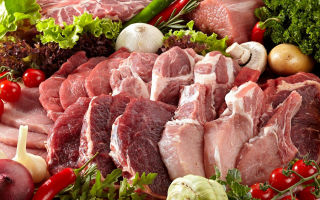Content
- 1 Types of meat
- 2 What are the beneficial substances in meat
- 3 Nutritional value and calorie content of meat
- 4 Useful properties of meat
- 5 What meat is considered the most useful
- 6 Slimming meat
- 7 Meat for children
- 8 Is meat good for pregnancy
- 9 How much meat can you eat per day
- 10 Is it worth eating meat at night
- 11 Is it ok to eat raw meat
- 12 The benefits and harms of jerky
- 13 How to cook meat deliciously
- 14 What meat is combined with
- 15 Harm to meat
- 16 Who is contraindicated to eat meat
- 17 How to choose the right meat
- 18 How to store meat
- 19 Conclusion
The benefits and harms of meat cause controversy between meat eaters and vegetarians. Healthy animal fats and amino acids counteract the dangers of cholesterol and the difficulty in digesting the product.
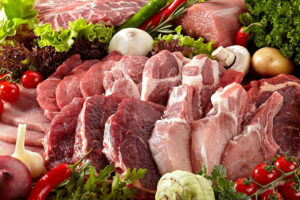
Types of meat
The most common classification of meat is by animal species:
- beef, veal;
- pork, pig meat;
- lamb, lamb;
- horse meat, foal;
- venison, camel meat;
- rabbit meat;
- turkey;
- game: ducks, chickens, geese, quails, chickens.
Wild meat:
- bear meat;
- buffalo meat;
- hare;
- roe and elk meat;
- game: partridges, wild ducks, pheasants.
Hunting meats - venison, camel and horse meat - are considered environmentally friendly and beneficial to health.
Chicken, turkey, veal, rabbit meat is used for dietary and baby food. They benefit the child, as well as the weakened, body.
Pork, lamb, goose and duck meat are the fattest: its benefits are questionable, according to nutritionists.
Depending on the temperature state, there are: steamed, chilled, frozen, thawed meat. The greatest health benefits come from fresh steamed or chilled meats that have been properly processed and vet tested. Frozen, improperly thawed, stored for a long time can be harmful to health and the digestive system.
After being frozen and properly thawed, the product retains the same beneficial properties as fresh meat.
What are the beneficial substances in meat
The useful vitamin and mineral composition of various types of meat is similar, only its percentage differs. Turkey is the leader in the amount of useful vitamin B4, rabbit meat - in phosphorus content, in beef - more B12 and zinc.

The benefits of meat are high in vitamins and minerals. Its composition includes:
- B vitamins: participate in metabolic processes, calorie processing;
- complex of vitamins A, C, E: have regenerating, antiseptic, antiviral properties, strengthen the immune system;
- calcium, phosphorus: support bone, dental, muscle tissue, regulate the thyroid gland, metabolic processes;
- potassium, sodium: regulate pressure, water balance, blood volume;
- magnesium, chlorine: are responsible for digestion, the work of the nervous system;
- iron: necessary for the formation of erythrocytes, blood clotting, increased hemoglobin.
The benefits of a particular type of meat in human nutrition depends on the need for certain vitamins or minerals:
- chicken covers more than 20% of the daily value in vitamins B5, B6, B12, chromium, phosphorus and sulfur compounds; by 62% - in vitamin PP; by 120% - in cobalt;
- beef contains 85% of the daily value of vitamin B12, cobalt; 20% - copper, phosphorus, sulfur, molybdenum; 40% - PP;
- pork covers the need for cobalt (80%), phosphorus, chromium (28% each), B4, B6, potassium, magnesium, zinc (15% each);
- rabbit and turkey leads in phosphorus content (225% of the norm).
Nutritional value and calorie content of meat
The amount of useful proteins and amino acids in meat reaches 20%. Protein is necessary as a building material for muscle, bone mass, connective tissue, participates in metabolic processes, the formation of antibodies.
The fat content of meat depends on the type and condition of the animal. Fat in lean pulp is 2%, in fatty types - up to 50%. Animal fat can benefit the body, it is involved in building cell membranes, maintaining water and energy balance.
The content of carbohydrates that can harm the figure in meat does not exceed 1%. They are represented by glycogen, a starch of animal origin, a useful nutrient.
Calorie content (kcal per 100 g) depends on the part of the carcass:
- pork - 266 - 486;
- lamb - 290;
- beef - 144 - 287;
- duck, goose - 347.
The most dietary and healthy are recognized:
- chicken (170-260);
- rabbit meat (179);
- turkey (190);
- veal (132).
Useful properties of meat
Meat saturates the body with a vitamin and mineral complex, useful amino acids, is easily absorbed when properly cooked.
The benefits depend on the type of product:
- beef - regulates the acidity of gastric juice, reduces the risk of anemia, compensates for the lack of zinc, iron, increases testosterone;
- pork - reduces the harm of cholesterol, the risk of developing cardiovascular pathologies, increases potency;
- game meat - useful for building muscle mass, strengthening the nervous system, immunity; it compensates for the lack of useful amino acids, neutralizes harm from external influences;
- horsemeat - has anti-sclerotic, anti-allergenic properties, improves digestion;
- mutton - reduces the risk of developing diabetes, the harm from high sugar, normalizes the pancreas, saturates with iron;
- rabbit meat - useful for baby, medical food, easily absorbed, does not cause allergic reactions, does not lose its beneficial properties during heat treatment.
For people playing sports or leading an active lifestyle, meat is good for breakfast. It replenishes energy losses, saturates well, prepares for active loads.
Useful properties of wild meat meat:
- boar has a low calorie content (120 points), strengthens bones and tooth enamel;
- beaver meat rich in selenium, reduces the risk of developing cancer and neurotic diseases, atherosclerosis;
- elk useful for sports nutrition, improves reproductive functions, strengthens the heart muscle, reduces the harm from overwork;
- game - normalize the work of the nervous system, has a general beneficial effect.
What meat is considered the most useful
The scientific rationale for the health benefits of meat comes down to calculating the ratio of beneficial proteins, amino acids to excess fat that is harmful to health, and calories.
Veal is recognized as the most useful, rich in proteins and amino acids. It contains 70% protein compounds, with a complete absence of fat and carbohydrates. This is the optimal ratio in terms of health benefits.
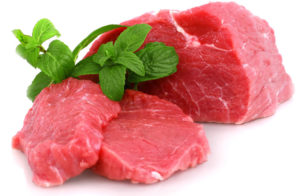
Veal with its properties:
- promotes muscle building;
- increases coagulability, blood quality;
- reduces pressure;
- accelerates the healing of burns, wounds, cuts, has regenerative properties;
- it is useful for the digestive tract and the nervous system.
Chicken is considered a dietary product. For healthy meals, use lean white meat from the breast. It is rich in phosphorus, beneficial acids.
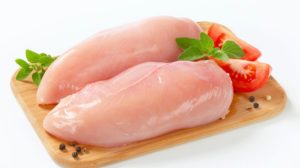
Useful properties of chicken:
- regulate the amount of sugar in the blood;
- stimulate the work of blood vessels, heart muscle;
- strengthen the immune defense;
- improve blood circulation.
Rabbit meat is suitable for baby food, due to its low calorie content, hypoallergenicity.
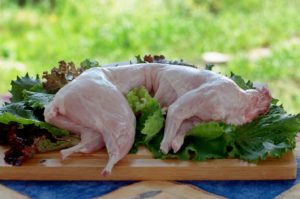
Thanks to the beneficial properties of rabbit meat:
- removes toxins;
- improves the condition of nails, hair;
- lowers cholesterol, blood sugar;
- reduces the risk of vascular diseases, normalizes blood pressure;
- speeds up metabolism.
Slimming meat
Protein diets are based on the intensive use of healthy meat products, which help to get a relief, slim figure and get rid of excess body fat without harm to health.
Meat is a nutritious product, it takes 3 - 5 hours to digest. During this time, the body spends energy reserves, without feeling hungry.
Boiled, baked or steamed meat in a multicooker, double boiler, pressure cooker brings benefits.
For dietary nutrition, the most useful are rabbit meat, chicken (breast), turkey, and lean beef.
According to the recommendations of nutritionists, in order to achieve results, you need to eat up to 500 g of boiled meat per day in combination with an unlimited amount of fresh vegetables and water. The recommended healthy amount should be divided into 5-6 meals. The last one - at least 3 hours before bedtime.
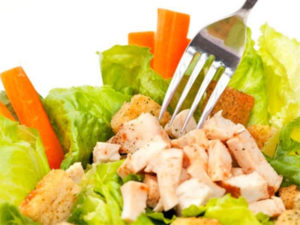
The duration of the protein diet is 3 to 10 days. Avoiding carbohydrates for longer periods of time will harm your well-being.
Fatty types cooked with salt and spices are not suitable for proper nutrition. They harm the figure.
Meat for children
Rumors and controversies about the benefits and dangers of meat for the health of young children continue. Pediatricians and nutritionists alike agree that a growing body needs animal protein.
The benefits of meat for children - in development and strengthening:
- nervous system, mental abilities;
- digestive organs;
- musculoskeletal system, bone, dental tissue;
- muscle frame.
The introduction of meat complementary foods to children who do not suffer from allergies begins at 8 months of age. The first products are turkey, rabbit, chicken, lean veal in the form of mashed potatoes or minced meat. After a year, low-fat types of pork and beef are introduced. Meat of duck, goose, wild animals can be offered to children after 3 years.
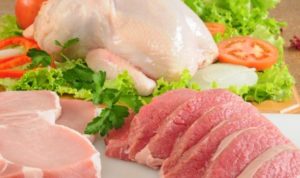
The recommended portion for one-year-old children is 50 - 60 g puree, with the obligatory addition of porridge or vegetables as a side dish.
Is meat good for pregnancy
Obstetricians-gynecologists recommend eating 150-200 g of meat per day during pregnancy with a side dish of vegetables or cereals. Its beneficial properties have a complex effect on the mother's body, support and nourish. Meat raises hemoglobin, normalizes blood volume, improves blood quality.
Dishes contribute to the full development of the fetus, the construction of strong bone and muscle mass due to the high protein content.
To get the benefits, they should be alternated in the diet:
- chicken - rich in protein, iron, stimulates metabolism, kidney function, normalizes blood pressure;
- turkey, duck, goose - contains useful vitamin E, which improves blood composition, appearance, condition of nails, hair, skin; folic acid, which is responsible for minimizing the risks of congenital malformations;
- mutton - contains zinc, iodine, iron, magnesium, normalizing cholesterol, well-being;
- pork - a useful source of B vitamins, which are responsible for the correct construction of DNA molecules, reducing the risk of developing genetic diseases.
Meat is harmful to the health of a pregnant woman if the recommended rate is exceeded:
- duck, goose, chicken skin, fatty pork - increase cholesterol;
- pork - strong allergen;
- beef may contain harmful pesticides and nitrates that enter the animal's body if it is not properly grazed and maintained.
A fried fatty dish harms digestion, causes heartburn, stool disorders, nausea, and general weakness.
How much meat can you eat per day
For nutritional benefits, nutritionists recommend including meat in your diet at least 4 times a week. The recommended healthy portion depends on the age, type of human activity:
- children under 3 years old should eat up to 75 g;
- under 6 years old - 100 g;
- up to 10 years - 120 g;
- boys and girls 11-14 years old - 130-140 g;
- 15 - 18 years old - 150 g;
- manual workers need 220 - 250 g;
- office employees - 120 - 150 g;
- for the elderly, 110 - 130 g is enough;
- after 75 years - 100 g.
The share of healthy meat dishes should be 30% of the daily diet.
Is it worth eating meat at night
Meat dishes quickly saturate, keep the feeling of satiety for a long time due to prolonged digestion - up to 3 - 5 hours.
Meat before bedtime will be harmful to health, causing:
- indigestion, stool disorder;
- feeling of heaviness, bloating, increased gas production;
- sleep disturbance, insomnia;
- general "broken" state in the morning.
Is it ok to eat raw meat
The health benefits and harms of raw meat are reduced to the possibility of infection with parasites.
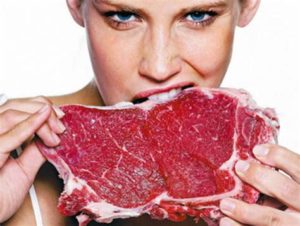
Fresh beef and veal are often used. Carpaccio must be prepared from quality raw meat that has passed veterinary control.
During heat treatment, almost all nutritional properties are preserved unchanged. In this case, the destruction of substances that promote digestion occurs. Processed meat is not completely digested.
The benefits of raw meat:
- does not contain mutagens - substances that cause the risk of developing tumors;
- does not affect the number of leukocytes (the cooked product causes a sharp jump);
- does not include additional fats, carcinogens that appear during cooking and harmful to the figure.
Harm to health - in a high risk of infection with helminths, bovine tapeworm, salmonella through pork, lamb, chicken.
The benefits and harms of jerky
The harm and health benefits of dry-cured meat are related to its composition, storage and preparation method.
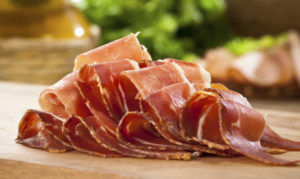
100 g of the product contains 250 kcal, 40 g of protein, 18 g of fat, 1 g of carbohydrates. It quickly saturates, restores strength after physical exertion. It retains a complex of useful properties and substances inherent in raw or boiled meat.
Contraindications to the use of dried meat:
- gastrointestinal diseases;
- disruption of the pancreas, gallbladder;
- obesity.
How to cook meat deliciously
Healthy meat dishes are prepared in the oven, slow cooker, double boiler, pressure cooker by baking, stewing, boiling. The minimum amount of salt and oil helps to preserve the beneficial properties.
Meat dishes are best prepared and served with non-starchy vegetables rich in healthy fiber. Vegetables help the digestion and absorption of protein, prevent bloating, and remove excess cholesterol.
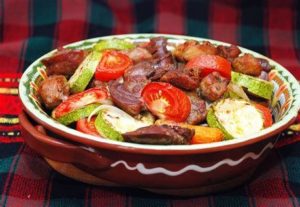
Fillet with vegetables in the oven
Ingredients:
- pork, young beef (fillet) - 1 kg;
- onions - 2 pcs.;
- potatoes - 5 pcs.;
- carrots - 2 pcs.;
- zucchini, zucchini - 1 pc .;
- eggplant - 1 pc.;
- frozen beans (green beans) - 300 g;
- tomato - 2 - 3 pcs.
- hard cheese - 130 - 150 g;
- salt, pepper, favorite spices - to taste.
Preparation:
- Rinse the fillet, cut into slices. If tough - marinate in soy sauce and mustard for 30 - 45 minutes, beat slightly.Put on a baking sheet in a thin layer.
- Cut the onion into half rings, put on the fillet.
- Cut potatoes, carrots, eggplants, zucchini into circles, put them in layers on a baking sheet. Each layer can be lightly added or sprinkled with soy sauce.
- Put the beans in the next layer.
- Lay the tomato on top, cut into large circles. Sprinkle with grated cheese.
- Bake for 50 - 60 minutes at 180 - 220 degrees.
With this method of cooking, the meat will retain its beneficial properties, it will become tasty, juicy, soft.
What meat is combined with
The combination of meat with spices and side dishes depends on taste preferences.
The ideal side dish in terms of health benefits would be green, non-starchy vegetables: squash, green beans, bell peppers, zucchini. Tomatoes, carrots, eggplant, pumpkin are also suitable.
From cereals, it will be useful to give preference to buckwheat, barley and pearl barley, rice.
Heavy side dishes for meat that can be harmful to health and digestion: potatoes, legumes, pasta.
To improve the taste, use soy sauce, pomegranate sauce, a mixture of peppers and herbs.
Harm to meat
Meat products can be harmful to human health if the recommended rate is exceeded, storage and cooking conditions are violated.
Potential harm:
- fatty species contribute to the deposition of cholesterol, blockage of blood vessels, increase the load on the heart;
- fried meat harms digestion, blocks metabolism;
- causes exacerbation of arthritis, arthrosis, the development of gout, due to the high content of purines;
- unscrupulous farmers introduce antibiotics, growth stimulants, suppressing immunity into the diet of animals;
- chicken and pork contain histamine, an allergenic substance.
Meat eaten at night will harm health and digestion, provoke insomnia, increased gas production, and a feeling of heaviness.
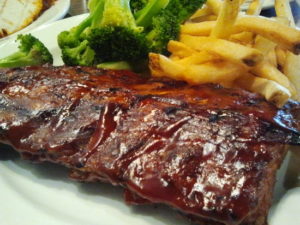
Who is contraindicated to eat meat
Contraindications to eating meat:
- exacerbation of gastrointestinal diseases;
- high cholesterol, vascular blockage;
- allergic reactions to animal fat and protein;
- cardiovascular disorders.
For the safe introduction of meat products into the diet, it is worth consulting with your attending physician and nutritionist, choosing the best type and method of preparation.
How to choose the right meat
When buying a fresh cut, you should pay attention to its color and smell.
- A good product, depending on the type of slaughter animal, has a natural shade - from pink to deep dark red. The fat is white. Gray, yellow, unnatural red, bluish shades should alert you.
- Particular attention is paid to bones. A pinkish or yellowish tint indicates that the carcass is soaked in potassium permanganate.
- The smell should not be harsh or unpleasant.
- The cut you like is worth touching: it should not be slimy or unpleasant to the touch. The fresh cut is elastic, moist, does not cause disgust. The fossa that appears when pressed is straightened.
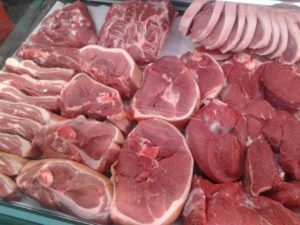
When buying frozen meat, you need to carefully study the label, check the expiration date, storage conditions. Ice in the package indicates a possible repeated freezing, pumping with water. Food that has been frozen for too long has a bluish, gray or yellow tint. It is devoid of most of the beneficial properties, it can be harmful to health.
How to store meat
Fresh pork, beef, lamb is stored in the refrigerator, without freezing:
- at temperatures up to 7 oC - 10 hours;
- up to 5 oC - 24 hours;
- before - 4 oC - 3 days.
Chilled game is stored:
- 4 – 7 oC - 2 days;
- 0 – 4 oC - 3 days;
- –4 oC - 4 days.
The shelf life of frozen meat is longer, but it loses some of its beneficial properties:
- frozen beef and game can be stored for up to 8 months;
- lamb, rabbit meat - six months;
- pork - 3 months.
Storage possible without refrigeration:
- Salting: Place the meat in a container, cover with a thick layer of salt. Can be stored for up to a week.
- Drying: small cuts of pulp must be boiled for 5 - 7 minutes, dried, sent to the oven for 12 hours. The dried product retains its properties for up to 2 months in a hermetically sealed package.
- Conservation: Put meat pulp well cooked with onions and spices in jars, pour broth, sterilize for 1 - 1.5 hours, roll up. Shelf life without a refrigerator is up to six months.

Conclusion
The health benefits and harms of meat depend on compliance with the recommended consumption rate, the correct preparation and storage. The type of meat in its useful properties should be suitable for a specific person, depending on his individual characteristics, the presence of diseases, vitamin deficiency. Meat benefits: restore strength, prevent the onset, development of diseases associated with the circulatory, cardiovascular, digestive systems.

